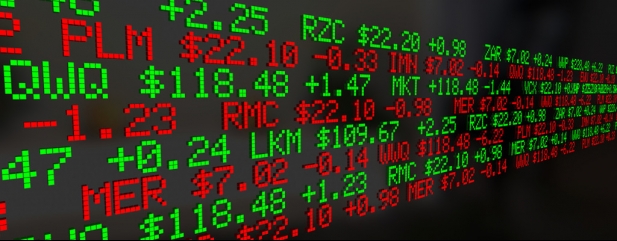Archived article
Please note that tax, investment, pension and ISA rules can change and the information and any views contained in this article may now be inaccurate.
How I invest: Farewell funds, hello shares

The coronavirus pandemic and the subsequent volatility in financial markets has made many people think again about their investments and review their portfolios.
One such person is Robert from North Yorkshire, who has switched his SIPP and ISA investments from funds into shares as he looks to take a longer-term view.
Before the pandemic all his SIPP and ISA investments were in funds, and Robert explains: ‘One reason I moved from funds to shares was to make long term investments. With the funds I held, because it was so inexpensive to sell and buy holdings I was too often tempted to sell and then buy funds as the market fell and rose again.’
Robert is retired and lives off his investments, having transferred the cash equivalent transfer value of his defined benefit pension scheme into a SIPP.
He also started investing in ISAs when they were introduced more than two decades ago and has tried to invest the maximum allowance every year from their inception.
He bought technology shares before the technology bubble burst and concedes he was ‘badly affected by the collapse in technology share prices’. He then invested in India and China and his investments increased in value until the financial crisis in 2008, after which he started transferring a ‘substantial amount’ of his investments to the American market.
In 2006, Robert took voluntary redundancy, and with part of the payoff received as well as using some existing investments he bought a holiday home in Cyprus. He invested the remainder in ISA and non-ISA funds, intending to move the non-ISA investments to ISA investments to maximise the use of his yearly ISA allowance.
All of his SIPP and ISA holdings are now in US stocks, mainly in the tech sector, and Robert says he switched from funds to US shares a week before the market bottomed stateside.
He says: ‘Since then my investments have exceeded my wildest expectations, although they have fallen back recently. I repeated the process with my ISA funds in April this year. I had seen evidence that the market was recovering, unfortunately since I invested my ISA fund in US shares the markets have fallen again.’
LONGER HOLDING PERIODS
On his strategy Robert says: ‘As buying shares directly in the US markets is considerably more expensive I intend to hold most of the shares I buy for a longer period of time, at least three to five years, and ignore the frequent changes in the markets.’
Robert was already considering transferring to shares and says the pandemic ‘gave me an opportunity’ to switch from the funds he held to US shares.
Other reasons he states for investing in shares directly are that he receives dividends from the shares. Also, although his initial cost of investing in shares is higher he points out there are no ongoing management charges, which you incur with funds.
Due to the increasing likelihood that the benefits he takes from his SIPP will exceed his lifetime allowance at some point in the near future, Robert has changed the way he uses his SIPP and ISA accounts.
Previously Robert crystallised a certain proportion of his SIPP, which gave him a £12,500 tax free lump sum and then each year took up to his personal tax allowance from the remaining crystallised amount each year until the residual crystallised amount was less than the tax allowance for a given year. He would then repeat the process.
A CHANGE IN APPROACH
He explains: ‘The money I took from the SIPP I would then invest in an ISA and take tax free income throughout the year by selling the ISA funds as required. Using this process I was paying no tax.’
But he adds: ‘With the success of my investments I realised that if I allowed my investments to build up in my SIPP and I exceeded my lifetime allowance I would be liable to pay much higher tax.
‘So I have decided to build up the money in my ISA by taking out enough money each year from my SIPP to pay in the maximum amount into my ISA, whilst at the same time also taking enough money from my SIPP to provide an income.
‘In this way I will build up my ISA investments which are not taxable and minimise the growth of my SIPP investments so that my lifetime allowance is not exceeded until a much later date.’
It is worth noting that Robert may still pay income tax on withdrawals from his SIPP depending on the scale of the income he is taking.
WOULD YOU LIKE TO FEATURE AS A CASE STUDY IN SHARES?
We are looking for individuals or couples who can discuss their experience with investing and some details about their portfolios.
Anyone interested should email editorial@sharesmagazine.co.uk with ‘case study’ in the subject line.
DISCLAIMER: Please note, we do not provide financial advice in case study articles and we are unable to comment on the suitability of the subject’s investments. Individuals who are unsure about the suitability of investments should consult a suitably qualified financial adviser. Past performance is not a guide to future performance and some investments need to be held for the long term. Tax treatment depends on your individual circumstances and rules may change. ISA and pension rules apply.
Important information:
These articles are provided by Shares magazine which is published by AJ Bell Media, a part of AJ Bell. Shares is not written by AJ Bell.
Shares is provided for your general information and use and is not a personal recommendation to invest. It is not intended to be relied upon by you in making or not making any investment decisions. The investments referred to in these articles will not be suitable for all investors. If in doubt please seek appropriate independent financial advice.
Investors acting on the information in these articles do so at their own risk and AJ Bell Media and its staff do not accept liability for losses suffered by investors as a result of their investment decisions.
Issue contents
Case study
Great Ideas
- SkinBio Therapeutics' psoriasis supplement could be a real money spinner
- BlackRock Throgmorton shoots the lights out amid mid-cap momentum
- Change at the top to supercharge Brown Advisory US Smaller Companies
- Why Lindsell Train loves Diageo as much as we do
- Aurora Investment Trust moves into top gear thanks to value tailwind
- Inditex's sales and earnings growth defy the doubters
Investment Trusts
Money Matters
News
- Record job additions not sparking inflation fears yet
- Markets unmoved by lockdown easing delay
- Space the new frontier for investors as ETF and investment trust launch
- GlaxoSmithKline to spin-off £30 billion consumer healthcare arm in 2022
- Regulator tells companies to prioritise pensions over dividends

 magazine
magazine








